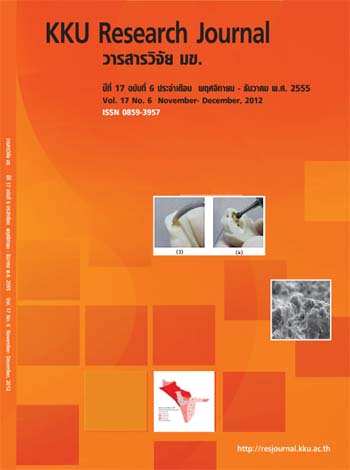Molasses fermentation to ethanol by SaccharomycescerevisiaeM30 using low ultrasonic frequency stimulation
Main Article Content
Abstract
The effect of low-frequency ultrasonic power (20-30 kHz) on ethanol production from molasses by
Saccharomycescerevisiae M30 at 30-35°C was studied. Ultrasonic power was continuously supplied to the
fermentation systems. Fermentation environment and process performance were evaluated during bioreactor
operation. The bioreactor operation with supplying of 20-25 kHz of ultrasonic power could perform under normal
pH (4.6-5.0) and liquid temperature (≤ 38°C), while at 30 kHz a high liquid temperature (≤ 40°C) wascreated.
Thus, the ultrasonic power at 30 kHz affected to yeast activity in this bioreactor. Models of specific ethanol
production rate (v) and specific ethanol production time (T) were used to evaluate the efficiency of ultrasonic
power in enhancing ethanol production. The results confirmed that ultrasonic power could enhance the ethanol
production by enhancing yeast activity. The optimum ultrasonic frequency to stimulate the fermentation system was
achieved at 25 kHz. Under this condition, the maximum v and T were obtained at 1.55 and 1.9 g/g.h, respectively


